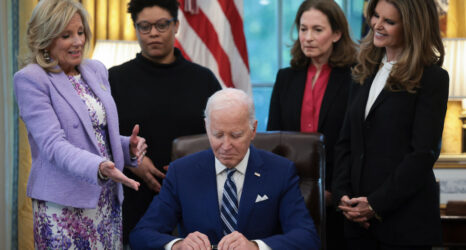Today, on World Sexual Health Day, we must prioritize sexual wellbeing as a key component of sexual and reproductive health care—and we must include older women in the conversation.
The World Health Organization (WHO) defines sexual wellbeing as a balance of emotional, physical, mental and social wellbeing with regards to sexuality, composed of factors such as pleasure, intimacy and emotional satisfaction. But although people of all ages pursue sexual pleasure and wellbeing, that is not recognized by all global health services, many of which continually leave out older women.
Our society’s patriarchal valuation of women, largely defined by their ability to have children, plays out in health programs that package women’s sexual health with maternal, child and reproductive health care. But the sexual health and wellbeing needs of those who engage in non-procreative sex—including women over the age of 50—must be considered, too.
A study conducted by the University of Manchester using data of 7,000 women and men between the ages of 50 to 90 found that 31 percent of the women surveyed were sexually active over the age of 70. Similarly, a study published by the New England Journal of Medicine surveyed 3,005 U.S. adults—1,550 women and 1,455 men—and found that approximately 62 percent of women between ages of 57 and 64, 40 percent of women between ages 65 to 74 and around 17 percent of women between ages 75 and 85 had been sexually active within the past year.
The prevailing myth that people, especially women, over the age of 50 no longer have active sex lives makes older women invisible to initiatives and facilities that target sexual and reproductive health, even though these services seek to elevate women’s access to sexual health. According to the WHO, safe sex interventions almost exclusively target younger people, and in some countries, providers do not ask older patients about sexually transmitted infection (STI) testing. (Because of social norms, older women also tend to withhold information about their sexual health needs to health care providers or do not seek out sexual health services.)
The reality is that all women enjoy sexuality and intimate relationships throughout their lives—and not just for reproductive purposes. Continuing to exclude women past their reproductive years in public health programming risks bypassing their sexual health needs and puts them at risk of negative health outcomes. While older women’s active sexuality can lead to fulfilling and pleasurable outcomes, it can also be associated with STIs and other unwanted sexual health outcomes.
To ensure all women can achieve their own capacity for sexual health and wellbeing, we must decouple sexuality from reproduction. Doing so can help public health programs target the needs of those who do not identify with gender norms related to maternity. By not distinguishing sexual activity from reproductive capacity, patients and providers may perceive sexual health services, maternal health care and family planning as one and the same—when, in reality, they are distinct. Undoing the myth of sexuality only as reproduction means health systems can better protect women’s right to sexual wellbeing and improve their access to the appropriate services.
By 2030, there will be 1.375 billion people over the age of 60 living around the world—a majority of them women. It’s time we bring older women from the periphery to the center of the sexual health agenda.





